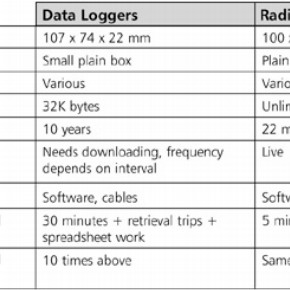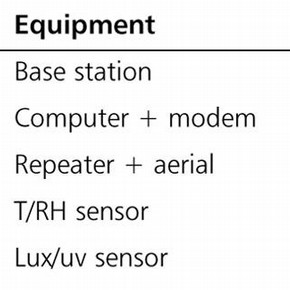Conservation Journal
October 1999 Issue 33
Off-site Radio Telemetry
This article looks at monitoring the climate of the Blythe House store, in which many objects destined for the British Galleries are housed. Blythe House is a Museum store about two miles from the main South Kensington site. It will discuss the specification, reliability and security of equipment, and suggest improvements in access to climate data.
Monitoring temperature, relative humidity, light and ultra-violet radiation levels is not unusual - in fact it is part of 'curating a collection'1 . Although the task is typical, the personnel involved are often of mixed background and training. Responsibility for collection and interpretation of climatic data can fall into the lap of the curator, conservator, scientist, manager or buildings engineer.
More typically, it may lie somewhere in-between. The V&A team combines all of the above; this is largely for historical reasons but it does have the advantage of promoting links between departments.
The Museum uses a wide range of monitoring equipment. Table 1 compares some of the characteristics of systems using typical data loggers and radio telemetry. In terms of staff time and costs it would be more efficient to use a radio telemetry system for the off-site store.
Radio-telemetric monitoring equipment for museums was developed at the V&A2. The general principle is that the sensors do not hold the data themselves but transmit the data as a radio signal to a repeater. This then sends the signal back to the base station receiver. The range over which signals can be received depends on the building fabric and internal fittings - the more metal between sensor transmitter and receiving aerial, the shorter the range. The base station stores the data and allows remote interrogation.
The store
The British Galleries objects are housed on two floors of a Victorian Post Office building. This is situated approximately twenty minutes from the main V&A site by vehicle. The approximate floor area of the store is 1350 m2 . The refitting of the stores with metal rolling racks was completed by October 1998.
The system
Monitoring of the store was to commence prior to, and continue during, the store refit and then perform well for the duration of the stores' life. Access to the data was possible on site but remote access to data anytime required a dedicated telephone line.
The system (see Table 2) was commissioned in March 1998 after a site survey. Installation began in late May and was completed in September. The sensors were strapped to the top of the structural columns to ensure that a constant and fixed location was maintained throughout the refit. Some of the sensors were later moved inside the metal rolling racks that are part of a built in storage system.
Despite the fact that radio telemetry is more efficient than previous methods, there have been a number of 'teething' problems. In the year that has passed since the system was commissioned there has been a number of challenges, summarised below:
-
system delivered in parts rather than all at once
-
computer unable to interface to off-site station
-
base station being switched off
-
power failures during building works
-
change in internal fixtures caused radio reception changes
-
re-routing of dedicated telephone line
-
dismantling of sensors
-
loss of sensors
-
upgrade of aerials
However, since April 1999 the system has worked well and we are looking for ways to improve access to the data. Currently, there is a dedicated stand-alone computer at South Kensington, which interfaces with the off-site base station. This means the data is duplicated (a rather convenient way of providing data backup). Reports can be produced directly from this machine but to enable access, the report must be transferred on to the Museum's network.
Careful planning of computer resources could mean that anyone in the Museum could have access to live climate data at the push of a button. At the moment a modem links to the off-site station, but it should be possible for the base station to interface to the internet. The resulting website could then be accessed by all Museum personnel who have the appropriate security clearance. A website of climate data could mean that immediate responses to 'incidents' would become possible without reliance on any single individual for reporting the climate. Although not a perfect solution to the long-running questions "who is responsible for Museum climates and for equipment maintenance?", radio telemetry has provided a great leap in the right direction.
References
1. S. Staniforth, Chapter 26 in Manual of Curatorship - A guide to museum practice, edited by J.M.A.Thompson, p192-203, Butterworths, 1984.
2. G. Martin & D. Ford, Data from the Ether, V&A Conservation Journal Issue 4, July 1992, p7-8.
October 1999 Issue 33
- Editorial - Changing Landscapes
- The British Galleries 1500-1900: An Overview
- 'Method in our Madness': Method Statements and the British Galleries
- Removal and Installation of Mirrors for the British Galleries Project
- The Remounting of a Victorian Tile Panel
- A Brief History of Mounts
- Don't Sit Down! The Investigation and Conservation of an Upholstered Seventeenth Century Settee
- Off-site Radio Telemetry
- Science Surgery
- Printer Friendly Version

